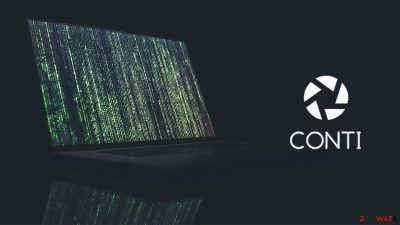The cybersecurity world witnessed a significant development on August 11, 2023, when the U.S. Department of State made a startling announcement. The department declared that it was willing to offer substantial rewards to individuals who could provide crucial information leading to the capture and prosecution of five key members of the notorious Conti ransomware gang. This move by the U.S. government underscores the severity of the threat posed by Conti to national security.
The Conti ransomware gang, formerly known as Ryuk, has a dark and extensive history of wreaking havoc on organizations and businesses worldwide. While the gang has undergone rebranding, its destructive capabilities have not diminished. In fact, it has only become more audacious and dangerous.
The U.S. Department of State is operating through its Rewards for Justice program, initially established to combat terrorism but now expanded to include cybercriminals. This expansion reflects the growing recognition of cyber threats as a matter of national security. The program seeks assistance from individuals, particularly those with local knowledge, in identifying and providing information about Conti hackers. In exchange for valuable information, informants stand to receive rewards of up to $10 million—a testament to the seriousness of the situation.
The Conti Gang: A Menace to Global Cybersecurity
The Conti gang’s criminal activities have left a trail of destruction in its wake. This nefarious group transitioned from Ryuk to Conti in 2020, rebranding but not relenting in its cyberattacks. Over the past two years, it has targeted a wide array of entities, including governments, schools, and health service providers. In total, Conti has been responsible for over 1,000 attacks, resulting in ransom payments exceeding $180 million in the past year alone.
The situation took an even more concerning turn on February 2, 2022, as the Russia-Ukraine conflict escalated. In an alarming statement posted on underground forums, the Conti gang declared its unwavering support for the Russian government in the ongoing conflict. The group brazenly threatened to employ its resources to launch cyberattacks on any entity involved in activities against Russia, specifically targeting critical infrastructures.
Shortly after this declaration, a Ukrainian security researcher began leaking a trove of over 170,000 chat conversations among Conti ransomware team members. These leaks, collectively known as “Conti Leaks,” exposed critical information, including the source code for the ransomware encryptor—a devastating blow to the gang’s operations. While these developments marked a significant setback for Conti, they did not spell its demise. Instead, the gang’s members remained highly active in various cybercriminal operations.
The Challenge of Capturing the Culprits
The Conti gang operates from within Russia, a fact that poses a considerable challenge for international law enforcement agencies. While the U.S. government’s Rewards for Justice program aims to incentivize individuals to provide information that could lead to the arrest and prosecution of Conti members, the odds of cooperation from Russian authorities are minimal.
Historically, Russia has been reticent to assist the U.S. in apprehending local cybercriminals. Given the current geopolitical tensions surrounding the Ukraine-Russia conflict, any hopes of Russian cooperation seem even less likely. As such, the primary goal of the U.S. government is not to physically apprehend the perpetrators within Russian territory but rather to gather critical information. This information may include details about the hackers’ locations, travel plans, or any other activities that could ultimately lead to their arrests if they were to venture outside of Russia.
A Relentless Pursuit of Cybercriminals
The U.S. Department of State’s decision to offer substantial rewards for information leading to the capture and prosecution of Conti ransomware gang members underscores the gravity of the situation. Cyber threats are no longer relegated to the realm of cyberspace; they pose tangible risks to national security.
While the challenge of bringing these criminals to justice remains formidable, the international community, cybersecurity experts, and law enforcement agencies are unrelenting in their pursuit of cybercriminals. The Conti gang may operate from within the shadows, but the pursuit of justice is an unwavering beacon of hope in the fight against cybercrime. As the global landscape evolves, so too must our strategies for combating these threats and protecting our collective security.

